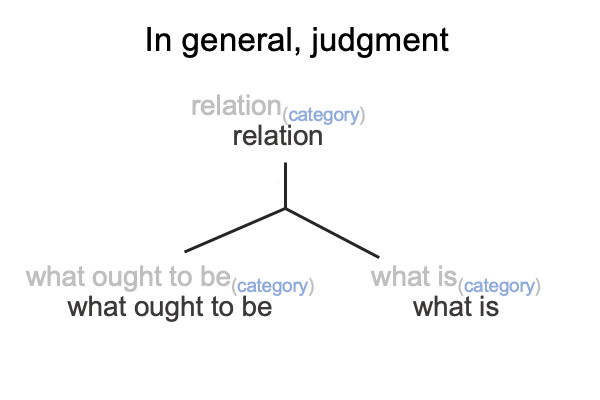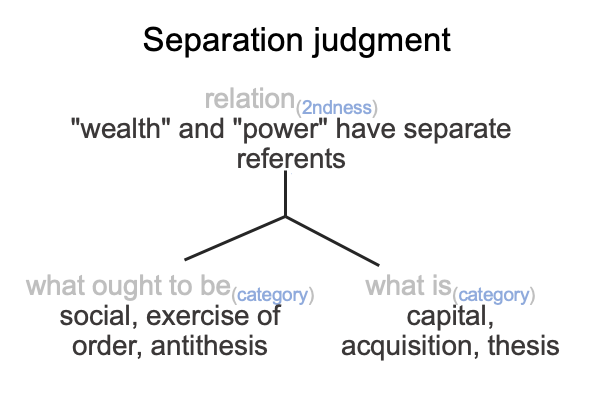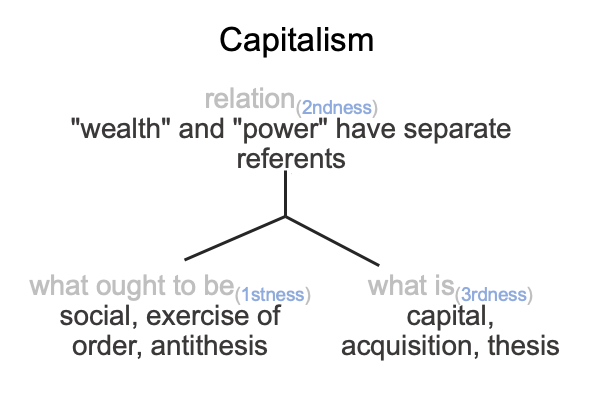0292 Judgment is a triadic relation composed of three elements: relation, what is and what ought to be. The judgment as a whole may be regarded as an implicit abstraction, characteristic of the Lebenswelt that we evolved in. The judgment rendered below allows the inquirer, in our current Lebenswelt, to contemplate the wholeness of the implicit abstraction, even though each element contains an explicit abstraction.

When each element is assigned a unique Peircean category, the judgment becomes actionable.
An actionable judgment unfolds into category-based nested form.
0293 Here is a picture of the actionable judgment where the conviction that “wealth” and “power” (1) are not a substance and (2) are distinct and separable by way of reference belongs to secondness, the realm of actuality2.

0294 Notice that what ought to be and what is are not assigned to categories. Two categories remain, thirdness and firstness. Thirdness unfolds into the normal context3. Firstness slides into the possibility of ‘something’1.
What does this imply?
One separation relation leads to two judgments and each of these two judgments unfolds into its own nested form.
0295 Here is the first permutation. What is goes with thirdness. What ought to be ends up as firstness.

0296 The separation of wealth and power (relation, secondness) brings capital, acquisitions & thesis (what is, thirdness) into relation with social, exercise of order & antithesis (what ought to be, firstness).
